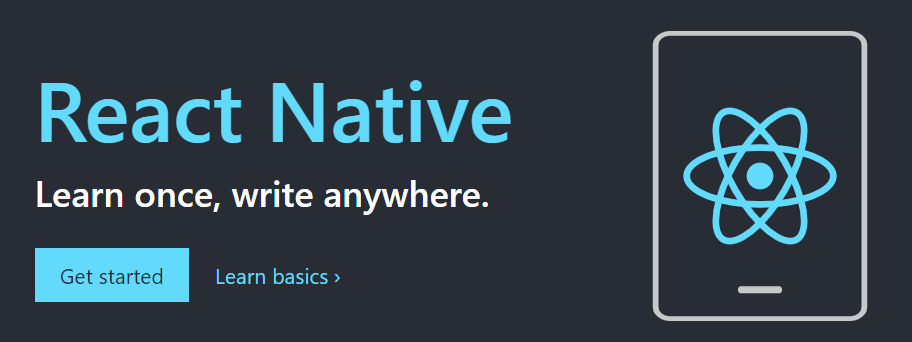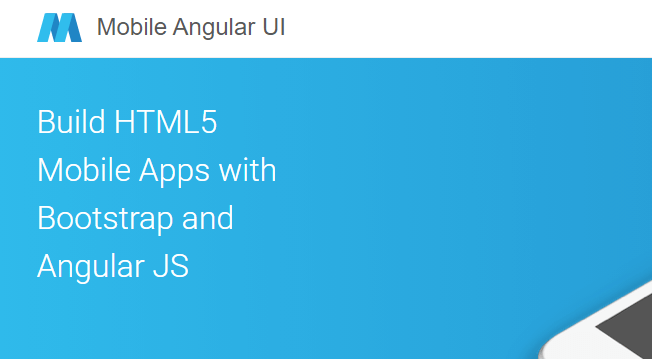Want to connect to a friend via a video call? Want to go to a movie? Want to order a pizza for dinner? Want to go shopping virtually? Just pick up your mobile phone, search for an app, download it, and there you are!
What was meant to convey in the above excerpt was that mobile applications have now become an inseparable part of our day to day lifestyle. Any task you define, your mobile app does it. Starting from getting information about a topic to connecting with your near and dear ones, starting from ordering stuff to paying electricity and other bills, mobile applications does it all.
Have you ever imagined what makes these mobile applications so efficient and useful? The answer is the development framework used to develop them. We can define a development framework, in simple words, as the interface provided to the app developers that ease their task of writing thousands of lines of code manually, with the ability to integrate the external libraries as and when required.
Also, with the introduction of the latest updates in a framework, the developer has to give minimum efforts in learning it and adapting to it, hence becoming ready to build dynamic applications with the latest and advanced features in a very short span.
Some of the advantages of using mobile app development frameworks for developing dynamic applications can be listed as follows:
- – Improvement in the efficiency of the developer
- – More scalable applications
- – Application security
- – Inter-app connection
- – Easy maintenance
- – Healthier relationships with customer
- – Real-time data access
We can categorize the mobile app development frameworks into the following classes:
1. Native Apps: the application that is designed especially for a single platform
Example is WhatsApp, Instagram, Facebook, Walmart
2. Web Apps: the application that serves the web pages on different browsers
Example is AliExpress, Flipkart, Twitter Lite, Forbes, OLX
3. Hybrid Apps: the application that is the combination of the above two applications, i.e. can be used on
mobile as well as on web.
Example is Twitter, Gmail, App Store & iBooks, Evernote, Untappd
Learn More: Native Vs Hybrid Apps
There are several mobile app development frameworks available, as open-source as well as payable, acting as a helping hand to the developers to build efficient and dynamic mobile applications.
Let us discuss these in the upcoming section.
Best Mobile App Development Frameworks
Following are the top 10 mobile app development frameworks that can be helpful to the developers to build mobile applications and would be trending in the year. Let us have a gist of these.
React Native:
One of the most popular and recommended frameworks by the app developers is the React Native framework. An open-source framework introduced by the development team at Facebook, React native enables the developers to create mobile applications for both Android as well as iOS.
The framework has its base as React and Javascript and has the advantage of being a cross-platform framework, i.e. code once, runs on multiple platforms. It targets to develop the applications that are native to the platforms, instead of developing the hybrid apps, which also have compatibility to support the web browsers. You can contact the best React Native Web Development Company to get your next project done on this framework.
Some of the famous mobile applications that are used in daily life, and developed using React Native are Uber Eats, Instagram, SoundCloud, etc. One might wonder why the framework is the most trending one, and hence let us have a list of its advantages:
React Native Features
1. Cost-effective
2. Reusable code
3. Supports external libraries
4. Latest features for deployment
5. Easily maintained
Flutter:
Flutter is a toolkit designed for user interfaces, introduced by Google. It helps the app developer in building applications for all three- mobile, web, and desktop. It is a cross-platform framework, with the concept of code once and runs anywhere. It is used to build mobile applications for Android and iOS.
One of the important aspects of the framework is that it consists of a wide range of widgets that can be customized fully by the application developer so that they can easily and efficiently develop applications that are native to the platform in a shorter period.
Another important component of the framework is Skia. It is a 2D rendering engine that is being utilized by Flutter. This is mainly used in creating attractive visuals in the application to create an interest among the app users.
Also, the framework works on a layered architecture that makes sure that the components of the framework are functioning properly and following the application in which they are imported.
Google Ads, SpaceX Go, Hamilton, etc are the apps built using Flutter.
Some of the benefits of using Flutter as a mobile app development framework are:
Flutter Features
1. Fully-fledged performance in a native environment
2. Adjustable and customizable UI
3. Strong support for widgets
4. In-built design material
5. The rapid development of application
Xamarin:
Xamarin, an open-source framework, developed by the team at Microsoft, has its base on the .NET language. This framework is also considered one of the most popular frameworks helpful in developing mobile applications.
Xamarin enables the developers to build dynamic mobile apps that are native to Android, iOS, and Windows platforms. It is a rich amalgamation of all the tools and libraries that are mandatory to develop any native mobile application. Apart from these, it also has native elements for developing user interfaces and offers its users an advanced level of experience in the case of UI.
This framework is also known for its concept of code once and run anywhere. This makes the process of mobile app development more efficient, time-saving, and cost-saving.
Several benefits of using Xamarin are listed as below:
Xamarin Features
1. There are around 1.5 million developers across the globe working on Xamarin
2. Most of the required API is included
3. Also, it is easier to integrate external libraries when required
4. Works on all platforms
5. Less cost and speedy development of applications.
Recommended: React Native vs Xamarin: Which is Better?
Mobile Angular UI:
This mobile application development framework is a combined implementation of Bootstrap as well as Angular. The framework is available as open-source for the app developers.
One can build attractive user interfaces using this framework due to the inclusion of different types of UI components such as the sidebar, navbar, scroll, switch, etc. in addition to fastclick.js and overthrow.js, and as a result, provides a robust experience to its users.
Also, it helps maintain and handle the Javascript of several browsers, making it compatible with all types of browsers.
Hotelier News, Skybox, etc are a few examples of the applications built using the Mobile Angular UI framework. Some of the advantages of Mobile Angular UI are as follows:
Mobile Angular UI Features
1. Responsive
2. Inclusion of interactive elements
3. Lightweight framework
4. No dependency on jQuery
5. One can easily convert a web application or a desktop application to a mobile app and vice versa using this framework.
Ionic:
Mobile app developers can now develop applications that are cross-platform with the help of various web technologies like HTML, CSS, Javascript, using the open-source framework known as Ionic. Introduced in early 2013, the Ionic framework enables the developer to build cross-platform applications that are compatible with Windows, Android as well as iOS.
Numerous layout-based components like navigation menus, filters, action sheets, forms, etc. are readily available in the framework to help the developer build attractive and dynamic user interfaces. Some of the important features of the framework include- native command-line interface for code execution, app packages that are based on Cordova, Ionic Native Package, etc.
Applications like MarketWatch, Amtrak, etc. are built on the Ionic framework.
The advantages of using the Ionic framework for application development are as follows:
Ionic Features
1. The rapid development of application
2. Cordova plugins
3. Built-in components for user interface
4. Independent on platforms
5. Has it’s base as AngularJS
Adobe PhoneGap:
Developed in 2011 by Adobe Systems, Adobe PhoneGap is one of the most trusted and popular frameworks for mobile app development among developers. Being an open-source platform, it is also known for its cross-platform compatibility, i.e. code once and run anywhere. One can develop these cross-platform applications using languages such as HTML5, CSS3, Javascript, etc.
One can develop the applications for all platforms, which in turn can run as a native app on the platform on which it is installed. Also, the biggest advantage of the framework is that there is no dependency between the framework and the hardware configuration of the mobile device on which it runs.
Wikipedia, TripCase, Buildr, etc. are some of the popular applications built using Adobe PhoneGap.
Major advantages of the Adobe PhoneGap framework are:
Adobe PhoneGap Features
1. Reusable code
2. No restrictions on hardware configurations
3. Support for external libraries and third-party plugins
4. Extended support
5. Compatible will all platforms
Appcelerator Titanium:
An open-source development framework, Appcelerator Titanium was developed by Appcelerator Inc. The framework is useful in developing mobile applications for multiple platforms. The development of this framework is based on the development toolkit that supports JavaScript, and also a package of more than 5000 APIs for developing the applications across Android, iOS, and Windows platforms.
This framework enables the re-use of 90% of the code developed using Javascript if the development of cross-platform applications is involved. Apart from this, the framework also includes rich elements and components to build rich and attractive user interfaces for application users.
Some of the pros of using the Appcelerator Titanium Framework are:
Appcelerator Titanium Features
1. Easy management of APIs
2. Cross-Platform compatibility
3. Easy to integrate external APIs
4. Improvised code reusability
5. Speedy process of development
Commonly used applications like Avis, Comerica, etc. are developed using Appcelerator Titanium.
Framework 7
Develop a common reusable code for android, iOS, and web applications and run it on any platform you want, using the open-source framework known as Framework 7. The application developer can make use of any tool he wants in addition to the existing technology of using HTML, CSS, or Javascript.
It also provides support for the applications built using Vue.js and React.js and its components. The framework has also the inclusion of several widgets as well as components to build rich user interfaces, for example, sidebars, lists, forms, etc. so that the development process can be easy going as well as efficient.
Out of the number of benefits of Framework 7, some benefits can be noted down as follows:
Framework 7 Features
1. Easily customizable
2. Inclusion of rich widgets and UI components
3. Supports external tools, namely Electron and NW.js
4. Rich development environment
5. Easy management of applications
Wappler, Kidoverse, etc. are examples of applications built using Framework 7.
JQuery Mobile:
JQuery Mobile is a framework that is used to build mobile as well as web applications, in addition to being available open-source to the app developers. The same version of code can be implemented in devices across varying platforms.
Certain useful plugins such as Content Slider, Image slider, Pop-up box, etc. are included for the ease of development for the app developer. This would help in creating a feature-based application that efficiently interacts with its users.
Apart from these features, the framework is also compatible with the applications built on PhoneGap and similar other frameworks. Pros of using JQuery Mobile are:
JQuery Mobile Features
1. Responsive applications
2. Runs on variable platforms
3. Lightweight
4. Add-on plugin supported
5. Strong themes included
Applications built on JQuery Mobile are Untappd, Veev, etc.
NativeScript:
Developers can now build applications with the support of external frameworks like Vue.js, Angular, TypeScript, Javascript, etc. They can develop any cross-platform applications, as the framework is available open-source.
The API support in NativeScript is the same as that of Android Studio or Xcode. This is the best framework available when the budget and time duration to develop an application are the main constraints.
Some of the advantages of building an application in NativeScript are:
NativeScript Features
1. Supports the development of applications on multiple platforms
2. Easy access to APIs
3. Code reusability
4. Powerful Backend support
Apps built using NativeScript are Smart Evaluation, MayMyPhotos, etc.
CONCLUSION
With this, we come to an end of the list of the most popular and recommended mobile application development platforms. Have a look at your app’s requirements and identify the appropriate framework! Happy Coding!
Read:





